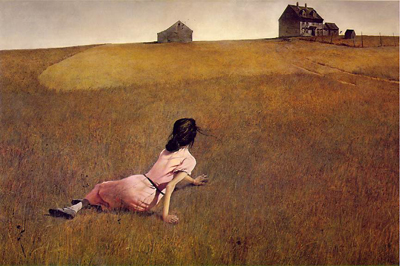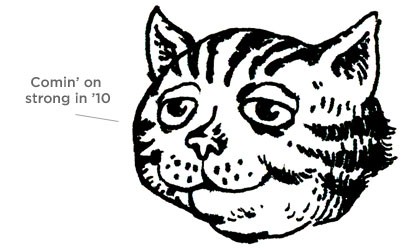
It's rare that a movie leaves me completely dumbfounded. Anyone who has spent any time reading this blog knows I can go on at length regarding just about anything, whether I know what I'm talking about or not. All the more amazing, then, that when it comes to the 1977 Japanese horror freak-out Hausu (House), it's impossible to know where to begin.
Directed by Nobuhiko Obayashi (Sada
The "plot" is one pulled out of the classic horror story handbook. Gorgeous (Kimiko Ikegami) is a high school student looking forward to summer vacation with her classmates, but her father, a film composer, has just returned from Italy ("Leone said my music was better than Morricone's") with a new bride to replace Gorgeous's long-dead mother. Distraught by the sudden life upheaval, Gorgeous decides to visit her aunt at her country home. When the plans for the other six girls also get derailed, Gorgeous invites them along.
The girls in the movie are like the seven dwarves, reduced to the types we normally expect in slasher pictures. In addition to Gorgeous there is Fantasy (her head is always in the clouds), Prof (she's really smart), Melody (likes music), Mac (likes to eat), Sweet (always nice), and Kung Fu (what do you think?). There is also a mysterious white cat named Blanche that appears just as Gorgeous informs the aunt of her impending arrival. Blanche is a signal of what is to come. The name has to be an intended allusion to A Streetcar Named Desire
Warning: Watching any clip is akin to a spoiler in a movie where ever scene offers something different.
Anyway, Auntie (Yôko Minamida) had a lover who was a pilot in the war. He went off to fight, never came back, and things have never been the same again. She has lived a life alone with her cat, numerous portraits of the fluffy creature covering the walls where family pictures would otherwise be. Her past is told as a silent movie, complete with title cards, and narrated by the girls themselves, as if they were watching it rather than just hearing Gorgeous tell the story. It's during a train ride, which itself looks like some idyllic marketing campaign come to life. The other passengers include a nun, a sailor, and a guy reading a book about horror movie monsters--the kind of diversity that would make any ad agency proud. (Indeed, Obayashi was a commercial director and responsible for the Charles Bronson cologne ad recently doing the internet rounds.) The train station also has many matte paintings that Obayashi uses as tricky trompe-l'œils, challenging our perception of reality. Is it any coincidence, then, that all the shots of the sky outside Auntie's house are matte paintings as well?
It's hard to say, actually. Maybe it is a coincidence. It's impossible to tell whether anything in Hausu is there by design. It stands on a line between an authentically bad movie and a hilariously intentional one. There are scenes of slapstick mixed in with some gore; there is lurid B-movie leering alongside heartfelt romance. Some of it is so completely gonzo that you can't believe Obayashi isn't playing a prank, such as the way the stepmom's scarf is always blowing behind her. Yet, I think Hausu is a sincere effort. It's the small details where a director truly reveals himself. What tipped it for me was the appearance of Andrew Wyeth's famous painting Christina's World in Gorgeous's bedroom. It's an image of a girl in a wheat filed, on the ground, half rising half sitting, her back to the audience, looking at a house on a hill. Painted in 1948, it has inspired much debate about who the girl is, where she is, why she is staring at the house. Does she see a hopeful life there? Or does she dread returning?

There are tons of stray details in Hausu. Every frame is packed with something, and if you don't let your eyes rove over the images, you might miss some of the odd touches. Objects move and come to life, things appear and disappear--you have to keep looking. Obayashi employs editing tricks to create loopy effects, as well as old-fashioned Fangoria gore, dumping buckets of blood on the floor and tossing rubber limbs around. Sam Raimi was 18 when Hausu came out. I don't know if he's ever seen the movie, but one can easily picture him wandering into a theatre somewhere as a teenager and having his mind blown. For all the laughs and the what-the-hell? moments, there are some isolated scenes in Hausu that are also genuinely scary and generally brilliant. The many inspired uses of severed body parts alone are enough to keep you up at night.
Hausu is such a bizarre curio, it's hard to imagine both why it has been buried for so long and why whoever was responsible didn't bury it deeper. I'm so baffled and in awe, I don't actually want it explained to me, there's no way a director's commentary could do it justice. It's a movie that just needs to be seen. It can only speak for itself, no matter how much I want to keep telling you more. The film is currently playing in various venues around the country, and I am sure a Criterion DVD will be here before the year is out. However it comes your way, if you get an opportunity, see it. You just have to see it.
Edit: That DVD is now here; read more about it in my updated review.

I originally thought this image from the recent Criterion newsletter was for Hausu, but further investigation reveals it is Fritz the Cat. Same month, maybe?

2 comments:
Nice review! I can't wait till it comes out on Criterion DVD Blue-ray this October. I recently heard of this bizarre movie and I just have to own it. It's like the Japanese version of Suspiria, came out the same year too!
I just watched it in Blu-Ray and I have to say I was floored by the craziness. I'm definitely going to inflict this on some hapless friends during some cult movie night. It barely makes sense outside of the "lost lover" plot. Just go with the flow!
Post a Comment